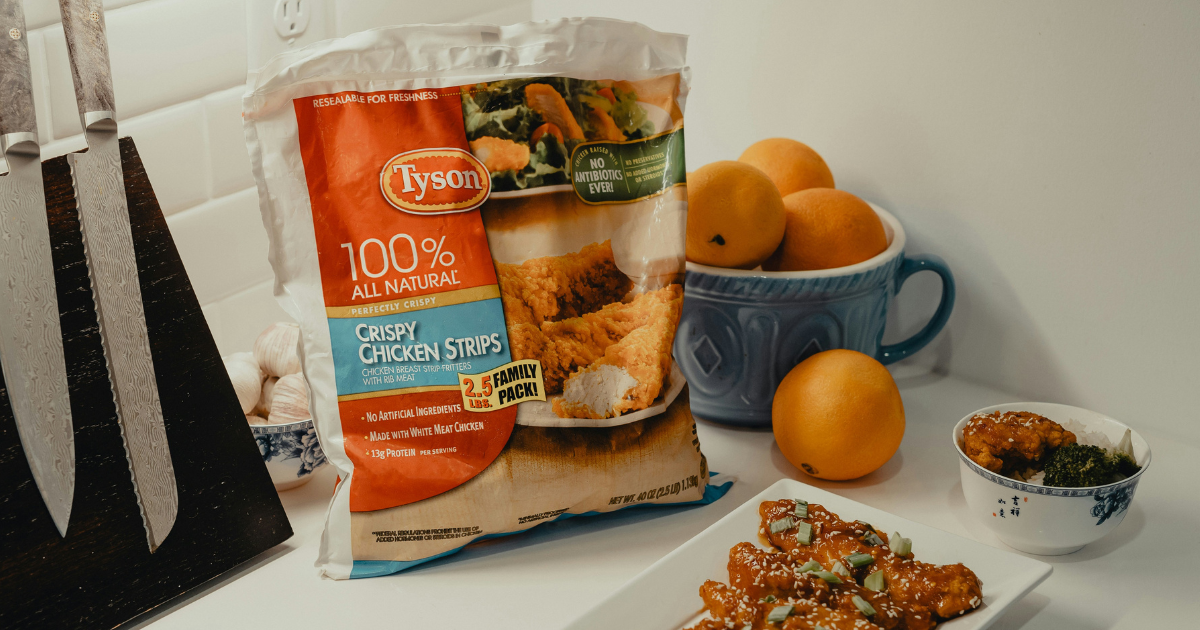
Photo by Tyson on Unsplash
Tyson Foods Projects Lower Sales Amidst Falling Meat Prices and Demand
November 13, 2023
Tyson Foods, the largest meat packer in the U.S. by sales, presented a slightly gloomy forecast for the next fiscal year this Monday, predicting revenue below Wall Street’s projections. This comes after the company witnessed a dip in its fourth-quarter sales due to falling chicken and pork prices and slowing beef demand.
Despite the lower-than-expected revenue, Tyson managed to deliver a surprising quarterly profit, exceeding estimates. This was primarily driven by the improved performance of its businesses during the second half of fiscal 2023.
Throughout 2023, the meat industry giant faced a unique set of challenges, as all its beef, pork, and chicken units were affected by supply issues. According to Reuters, “Tyson’s beef business, its largest unit, is struggling as U.S. cattle inventories have declined to decades lows, while its chicken and pork businesses grappled with excess supplies this year.” Moreover, a robust dollar hampered U.S. beef exports, while high food prices and interest rates led American consumers to curtail some of their meat purchases, further straining household budgets.
However, Tyson’s CEO Donnie King remains optimistic, stating that the company is operating with greater efficiency and the demand for protein remains robust. Tyson has been streamlining its operations, which included job cuts and closing some U.S. chicken processing plants.
Tyson managed to post an operating margin of 1.8% for its chicken business in the quarter ending Sept. 30, seeing a reversal of fortune after losses in the two preceding quarters. However, Tyson’s largest unit, the beef business, recorded a fall in quarterly sales volume of 6.7%, even though prices rose by 10.2%. The company anticipates an adjusted operating loss of between $400 million and breakeven in fiscal year 2024 for this unit, primarily owing to restricted U.S. cattle supplies.
Overall, Tyson expects its total sales for fiscal 2024 to remain static at $52.88 billion, a figure below the analysts’ average projection of $54.4 billion, according to LSEG data. The company’s fourth-quarter sales dropped 2.8% to $13.35 billion, falling short of analysts’ predictions of $13.71 billion. Yet Tyson managed to surpass expectations on profits, reporting adjusted earnings of 37 cents per share as opposed to the expected 29 cents.
According to MarketWatch, “The U.S. Department of Agriculture indicated fiscal 2024 protein production will ‘decrease slightly’ from 2023 levels, with beef production down 5% while production of pork increases 2% and of chicken increases ‘slightly.’”
Furthermore, “Tyson’s stock has dropped 17.8% over the past three months and has tumbled 27.1% year to date, while the S&P 500 index SPX has slipped 1.1% the past three months but has rallied 15.1% this year.”
Recent News
Saudi Aramco Launches $12 Billion Secondary Share Sale
Saudi Aramco, the world’s largest oil company by daily crude production and market capitalization, launched a substantial secondary public offering on Sunday, aiming to raise around $12 billion. This move comes as part of the Saudi Aramco’s strategy to generate additional funds, following its record-breaking initial public offering in 2019, which raised $29.4 billion by selling 1.5% of the company.
Nvidia Unveils Cutting-Edge AI Chips to Assert Market Dominance
Nvidia has once again made headlines with the announcement of its next generation of artificial intelligence processors. At the Computex conference in Taipei, CEO Jensen Huang unveiled the “Rubin” processors, a successor to the “Blackwell” chips for data centers that were announced in March. This surprise reveal comes even before the Blackwell chips have begun shipping to customers, signaling Nvidia’s aggressive strategy to dominate the AI processor market.
Rubio’s Coastal Grill Shutters 13 San Diego Locations
Rubio’s Coastal Grill has announced the closure of 13 locations in San Diego by the end of Friday. The closures are part of a broader strategy to address the rising operational costs in California.
Boeing’s First Astronaut Flight Postponed Due to Last-Minute Computer Glitch
In a turn of events, Boeing’s highly anticipated first astronaut flight was called off at the last minute due to a computer glitch. This setback adds to a series of delays that have plagued the program over the years. The launch, which was scheduled to take place at Cape Canaveral Space Force Station, was intended to send NASA astronauts Butch Wilmore and Suni Williams to space aboard Boeing’s Starliner capsule.
